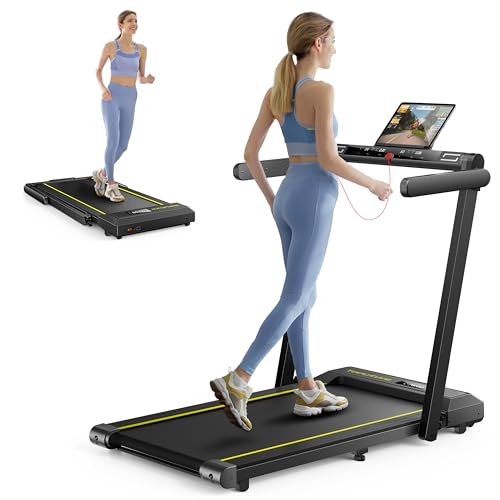how to change the incline on a treadmill to Use a Treadmill Incline Workout
Many treadmills allow you to alter the slope. Uphill walking at a steep angle burns more calories than walking on a flat surface.
This is a low-impact exercise that can be an alternative to running for people with joint problems. It can be done at various speeds and is simple to alter based on fitness goals.
Selecting the best slope
It doesn't matter if you're a beginner on the treadmill or an experienced professional, incline-training provides a myriad of opportunities to spice up your cardio workouts. The incline feature of treadmills allows you to simulate running outdoors, without the strain on joints. You can burn more calories, build endurance and strengthen your lower leg muscles and increase your heartbeat by increasing the intensity of your runs or walks. It is easy to incorporate incline training into your cardio workouts as a HIIT session or a steady state exercise.
If you're walking on an incline, make sure you take longer steps and keep your arms pumping. As a rule, tense your arms at an angle of 15% and relax them at a 1% incline. This will improve your walking technique and reduce the risk of injury. Be careful not to lean too far forward when you walk up steep hills, as this will strain your back.
If you're just beginning to learn about incline treadmill workouts it's a good idea to start with a low slope and then work your way up. Before beginning any incline, you should ensure that you can comfortably walk for 30 minutes at a steady pace on flat ground. This will help avoid injury and allow you to gradually increase your fitness level.
Most treadmills allow you to set an
electric incline treadmill as you exercise. However, some
do all treadmills have incline not permit you to alter the incline manually, and you will need to stop your workout and manually adjust the deck of the treadmill to the desired incline setting. This can be a hassle and isn't the most efficient for an interval exercise where the incline fluctuates every few minutes.
When you're doing an HIIT session, it's important to know the approximate percentage of your maximum heart rate (HRmax). This will inform you when you've reached your goal level of intensity and it's the right time to increase the incline or reduce the speed. If you're doing steady state exercise, it's also important to monitor your heart rate throughout the exercise and maintain it within 80-90% of maximum heart rate.
Warming up
Treadmill workouts are a great way of burning calories, but adding an incline can increase the intensity and provide additional benefits such as functional strength training. Warming up is vital prior to increasing the intensity. This will help reduce the risk of injury and also prepare your muscles for the intense work ahead.

If you're just beginning to fitness, beginning your workout with two minutes of strenuous walking is a great way to begin your warm-up. After you've warmed-up, you can start running. After your jog, you can add another two minutes of walking at a fast pace to keep warming your legs. You can then progress to a full-body workout, such as one which incorporates bodyweight workouts such as squats or walking lunges.
A full-body workout is excellent because it targets a variety of muscle groups. It also helps to build an energised core. It's also a great method to increase your heart rate without having to push yourself too hard on the treadmill. Ask your fitness instructor for advice when you're unsure of the method to choose.
Include an incline to your treadmill workout. This will provide you with the most realistic exercise terrain and increase your VO2 Max, which is the maximum oxygen intake. Walking on an inclined surface will help you prepare your muscles for walking on real-world terrain and lessen the strain on your knees.
Treadmill incline exercises also target various leg muscle groups and are great for toning your lower body. Walking at an angle can improve your range of movement in your arms and strengthen your shoulders and chest.
A high-intensity treadmill exercise is an excellent choice for those who are new to the sport and is suitable for those who want to challenge themselves and achieve higher heart rates without the stress of pushing their bodies too far. It is crucial to keep track of your heart rate during a high-intensity treadmill workout, and be sure to stretch following the workout. Stretching can help ease tight muscles and will help to recover your body after intense exercise.
Intervals
You can alter the intensity of a does treadmill incline burn fat (
read this post from images.google.com.my) incline exercise using intervals. Interval training has been shown to help burn calories while building muscles faster. It involves alternating high-intensity exercise with lower intensity exercise, such as walking or jogging lightly. This type of workout will help you increase your VO2 max which is the highest amount of oxygen that your body can consume during exercise.
To get the most out of your treadmill incline workout, it is recommended to incorporate an equal amount of walking and jogging. This will allow your body to recover between high-intensity exercises and avoid injury. You should also make sure that you warm up before starting the intervals.
The first step in designing a treadmill incline workout is to determine the target heart rate. This should be around 80-90% of your client's maximum heart rate. You can then decide which incline and speed to use for each interval.
You can create your own interval program or use the built-in programs on your treadmill. For instance, you can begin with a 3-minute interval that is set at a comfortable jog for the first set and then gradually increase the incline every interval. When you have reached your goal heart rate, you can easily jog for the remainder of the exercise.
You can then jog at an incline between 10 and 15 percent and then run for 3 to 6 times. Then you can go back to jogging at a slower pace for a minute. Repeat this sequence between five and eight times.
If you don't feel at ease using a treadmill try a walking or running incline workout. This will test your balance and work your leg muscles harder than the treadmill. It is important to ensure your knees and ankles are free of any problems before you try this type exercise.
You can also include a variety of dumbbell exercises in your incline workouts to add more muscle-building activity. For instance, you can do lateral raises and dumbbell rows during your rest intervals to make your workout more challenging.
Recovery
The majority of treadmills come with an incline function that lets you simulate walking uphill and running. You can adjust the slope to make your workout more challenging, or add intervals of higher intensity. This kind of exercise is ideal for people who are looking to improve their cardio and burning calories without worrying about their joints.
In addition to burning more calories, incline walking also engages different muscles in the body. This can help strengthen the posterior chain that includes the glutes and hamstrings. Incline
treadmill for small spaces with incline walking also works out the muscles that form your calves, such as the smaller peroneal muscles as well as tibialis posterior muscles. This improves strength as well as flexibility, and can be used as a substitute to jogging for people who are not comfortable with the high-impact exercise.
If you're new to incline walking, start with a low angle and gradually increase it as time goes by. This will reduce joint pain and allow you to reach your fitness goals faster. It's important to listen to your body and stop exercising if you feel discomfort or pain.
Start by jogging at a moderate slope or walking on a level for five minutes to reap the maximum out of your incline workout. Don't forget to keep an eye at your heart rate throughout the exercise.
After your first interval, lower the incline by 0% and walk briskly for 3-4 minutes. This phase of recovery helps get your heart rate back to normal and helps prepare your body for the next step.
Repeat this procedure throughout your incline workout. Make sure that the work-to-rest ratio as close to 1:1 as you can. This allows you to increase the intensity of your workout and achieve the desired result in a shorter amount of time. Stretch your muscles after exercising to avoid tight muscles and issues with flexibility.
